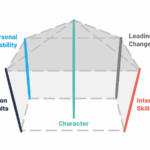How do you “reset” when it feels like everything that could possibly go wrong actually…does? Does it completely derail your day? Or, are you able to refocus? Read ahead for some quick, easy tips for getting your mind – and day – back on track.
How do you reset and restart when you wake up under a dark cloud? Or, when everything you had planned for the day gets turned upside-down by an unforeseen event? Or, when everything that possibly could go wrong actual does go wrong?
I’ll start by sharing a personal story. Monday morning, I woke up with a holdover feeling of “yuck” that started the evening before due to an emotional, somewhat negative meeting that ended on a gloomy note. Throughout the remainder of the evening, I ruminated over what went wrong, and what my part was in it, including how I could or should have helped rectify the situation. Even a good night’s sleep didn’t help unravel the knot in my stomach which had progressed into general anxiety and was promising to escalate if unchecked. My eventual solution, thanks to one of the tips I’ll share below, was to clean out, categorize items, and reorganize my freezer. That simple action of forcing my brain to change its focus snapped the cycle of negativity – and allowed me to focus on what actually happened during the meeting and explore solutions to prevent a repeat in future meetings. It was a shift from negative, anxiety inducing rumination to positive forward-thinking momentum.
Back to the initial question: How do you reframe and reset when your day is derailed, and your brain has switched into catastrophe (major and minor) mode? We are no longer present, in the moment, but are now in “future-cast” mode. What is “future cast” mode? It’s that exhausting mode where we picture every minor and major disaster that could possibly happen, without the benefit of checking in with our rational brain.
Please know, you are not alone. For over 40 million U.S. adults this “what if” mode is fairly commonplace since they are all too familiar, and struggle, with anxiety. Even if you aren’t in that 40 million figure, let’s face it: we all have those unexpected, jarring days.
So…how do we turn down the volume? Here are a few tools and tricks I personally use that are suggested by clinical psychologist Michelle Goldman, Psy.D, advisory group member of the Hope for Depression Research Foundation. Use as needed!
The 5-4-3-2-1 Tool
This engages all five of your senses and grounds you in the present moment. How it works: Look around the room and 1) name five things you see, 2) four things you can feel, 3) three things you can hear, 2) two things you can smell, and 1) one thing you can taste. I used this tool when I got stuck on an elevator a few years ago, and it definitely worked to get me back into a calmer, more present state of mind.
Shake (or Walk) It Off
Moving your body helps release tense energy and defuses anxiety. You could choose to dance to a favorite song or take a 10-minute lap around your block or office. Just those few minutes of physical movement have been shown to increase resiliency and positive feelings, as well as provides a fresh perspective when you re-engage with work, life.
Groups, Lists, Categories
Pick a subject – your favorite board games, words that start with the letter “j” or anything else you enjoy – and list or categorize as many items as you can in that topic. You will notice your focus shifts to the category and away from the triggering situation(s). Note this is the technique I used earlier when I emptied everything out of my freezer, grouped it all by category, then replaced with a new system of organization (bonus: we found our missing container of mint chocolate chip ice cream!).
Ice Cube Trick
One way for an instant jolt back to the present moment is to place an ice cube directly onto the pulse point your wrist. This action forces your body to focus on the cold and snaps your mind back into the present moment.
Trade Emotions
When you find yourself overwhelmed by the list of everything that went wrong in a meeting, or how you need to reorganize an entire day due to a missed appointment, take a break and laugh. According to Goldman, “When we genuinely laugh, we feel less anxious.” I recommend finding a “go to” podcast or YouTube video and have it ready when needed. (My favorite: Gary Gulman: How the States Got Their Abbreviations)







